Hemp Plastics Hempcrete Hemp Building Materials Hemp can be made into any building material, including fiberboard, roofing, flooring, wallboard, caulking, cement, paint, paneling, particleboard, plaster, plywood, reinforced concrete, insulation, insulation panels, spray-on insulation, concrete pipes, bricks, and biodegradable plastic composites which are tougher than steel. Foundations can be made out of hemp hurds, a processed based on ancient technology adapted for modern use. To do this, set up a plywood frame (preferably hemp plywood), then fill with a mixture of hemp hurd (wood chip-like substance) and combine with lime, sand, plaster, some cement, and enough water to dampen, and let the mixture set for a day. Then take the frame down, but let the mixture continue to harden for about a week. The lime and the hurds create a chemical reaction which binds the mixture together. Amazingly these structures continue to get harder and stronger everyday until they fossilize, as is testament by a 6th century hemp-reinforced bridge in France. After this happens, the hemp foundation walls are as strong as stone. Hemp foundation walls are 7 times stronger than concrete foundations, half as light, and three times as elastic, which means that these building will bend, but not break. Because of their superior strength and flexibility, hemp foundations are resistant to stress-induced cracking and breaking. Even earthquakes and other natural disaster cannot break or crack these structures. Hemp foundation homes and buildings are self-insulated, including thermal and sound insulation, resistant to rotting, rodents, insects, and they are fire proof, waterproof, weather resistant, and the walls breath so the rooms do not get stuffy. Hemp homes stay warm in the winter, and cool in the summer. If hemp were legal in the United States, it would be the cheapest source of raw material for concrete-like foundations. Plus hemp hurds can be processed in existing wood mills without major changes to the equipment. Hemp-foundation homes are ecologically appropriate because they are inexpensive, and can be prepared on site using only a cement mixer, and the material would be cheap and abundant. Foundation floors can be made in much the same way as the foundation. Hemp resists seepage, and so hemp cement is applicable for pouring onto a soil base to make a foundation floor. The floor insulation hardens into a solid mass which will not shift under pressure. A German company produces a product called Mehabit, a hemp hurd substance covered with coal-based bitumen, which is sticky, and when leveled out on a hemp cement floor, will dry to form a thermally and phonetically insulated floor. Washington State University has produced hemp fiberboard is lighter, twice as strong, and three times as elastic as wood fiberboard, plus it has sound proofing and pressure isolative characteristics absent from wood fiberboard. These composites are also resistant to pests, moisture, and funguses. The process involves chipping the hemp stalk, bonding it together with resins and glues, and clamping it down into molds under high pressure until it hardens. Concrete pipes can be made out of hemp fiber which cost 1/3 that of polypropylene. These pipes have greater flexibility, greater elasticity, and are resistant to cracking. Stones can also be made out of hemp by wetting the stalk's cellulose, and forming it into a hard black rock, which can be cut, drilled, cast, carved, or formed into any shape. Hemp building material could allow us to replace the need for wood, bricks, and fiberglass insulation. Germany and France are using hemp for construction material, replacing drywall and plywood. A French company has built over 250 homes using hemp materials. Hemp homes have also been built on the Pine Ridge Reservation in South Dakota. Using hemp is economically smart and ecologically appropriate, plus the homes built with hemp are as hard as stone and are not subject to natural disaster. Wow, sounds kind of like a miracle, doesn't it? What are we waiting. makingmoneywithrich.siterubix.com 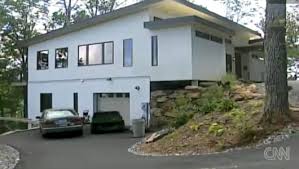
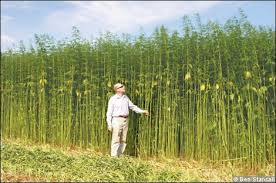

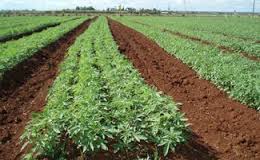
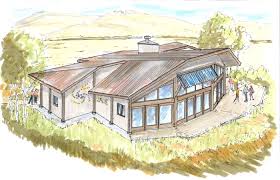 makingmoneywithrich.siterubix.com
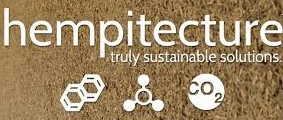
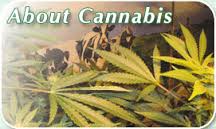
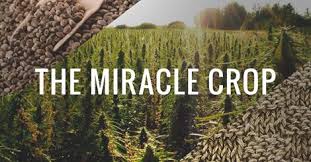 makingmoneywithrich.siterubix.com
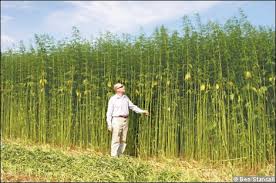 | Rebuilding in a developing world. by Scott Blossom The ecosystem is beginning to show many signs that the Earth is continually seeking to balance the many forces that are acting upon it. We can no longer deny the fact that our continual drive for economic growth has a drastic effect on the natural capital that our traditional economy is based upon. Many great leaders of this country such as Thomas Jefferson and George Washington have sighted the importance of local agriculture and independence from foreign resources. Unfortunately, as we continue to put pressure on the Earth to supply us with non-renewable materials, massive amounts of energy are released in ways that can detrimental the human existence. Although many of these changes may seem to be on a scale that is much too large for us to control, we are beginning to see the increasing role that humans have in a fragile, yet powerful ecosystem. In recent years, we've seen dramatic weather changes, along with increased risk of storm, flood and fire. Natural disasters, such as those that are represented by what we have seen recently on the East Coast in the form of Hurricane Isabelle, and on the West Coast in the form of large forest fires, present a realistic view of the natural changes that are currently happening are currently influencing our ecosystem. In addition, we are seeing human induced occurrences influencing the ecosystem as well. Many of our water resources are exhibiting decreasing water quality, and increased flood activity due to our creation of impervious surfaces and runoff laden with toxic materials. As a result of this, we are seeing much of our soil, our valuable and usable land, being polluted washed away with increased amounts of erosion, and our agricultural fields being filled with sedimentation. When our children can no longer safely sunbathe, or swim in rivers, there is evidence that the once-finely tuned relationship between humankind and nature is out of balance. Although many natural disasters are beyond human intervention, we do have a direct influence on the environment with our methods of re-building after their occurrence. Development can actually repair environmental destruction with intelligent bioengineering and advanced ecological agriculture. Most importantly, we can heed the advice of our forefathers, while taking advantage of current technology, and begin to make intelligent planning and engineering decisions as we continue to develop and grow into a society that can be can be economically and environmentally stable. In this developing world we must actively design communities that allow us to work with the environment, while utilizing the production of our building materials as an actual method of remediation and retrofitting of our current situation. By doing so, we can continue to grow at a rate that is sufficient to keep the economy strong, as well as allow our environment enough time to regenerate, even as we harvest agricultural resources that will replace synthetic materials. By using renewable materials that alleviate the need to extract those of which have taken years to form, we can release the many levels of pressure on the earth, before forces of nature release themselves. With this goal in mind, we are guided to design solutions that utilize renewable resources such as the industrial hemp plant. In the development of a community plan we may explore how a renewable resource such as industrial hemp can be used in conjunction with innovative design to stabilize the economy, as it stabilizes the environment. Site One of the first aspects in developing a new community, or renovating an existing community is to select a site that is suitable for sustainable development, which in many cases, requires the treatment of areas that have been previously impacted. The industrial hemp plant can be used in remediation of brownfields, as it has a higher nutrient uptake than any other agricultural crop. The industrial nature of this crop lends itself well to these types of applications as its products can be used for many industrial applications (as we will discuss later) other than consumption. In addition, the hemp plant can be an integral part of the reforestation projects that are necessary after a large forest fires, or a large clear cuts. Industrial hemp is excellent sown in a fallow field, as well as in crop rotation; the roots loosen soil, and fallen leaves return beneficial organic matter to the soil. In many cases industrial hemp can be planted as a means to stabilize soil, thus lessening the amount of valuable land that is lost to erosion. In addition, the fibers from the hemp plant can be arranged in a fiber matrix that can be secured to eroding slopes as erosion control blanketing and matting, as well as into fiber logs that help in the prevention of shoreline erosion. The actual growth of the plant itself can alleviate the need for the millions of pounds of toxic fertilizer that contaminates our watersheds. In all of these ways, the growth of industrial hemp can help in the restoration of our watersheds and streams, as it is grown for usable materials that will be later used in the community design. Cutting edge methods of managing stormwater using low impact development techniques such as bioretention and vegetated filter strips as a means reducing peak runoff rates, improving water quality, and replenishing aquifers, lend a whole new potential for the incorporation of the industrial hemp plant into our landscape. Building Many traditional methods of buildings utilized local materials to construct buildings and sheds. By strengthening agricultural base we can return power back into the people who work American soil, thus decreasing the need for dependence on foreign resources. Industrial hemp holds the potential to strengthen growing communities on reservations and rural areas, as the fibers and hurd from the hemp plant can reinforce traditional adobe and fiber reinforced concrete mixtures. In addition, one acre of hemp produces as much cellulose fiber pulp as 4.1 acres of trees, resulting in an excellent material to be used in the composites industry. Hemp resin can be used as an additive in the creation of biodegradable polymers that help to reduce the problems of waste disposal associated with toxic materials. Biodegradable polymers can potentially be combined with plant fibers to produce biodegradable Eco-Composite materials. The reinforcement of these polymers by means of vegetable fibers improves their mechanical properties and opens up new fields of application within the construction industry with the use of techniques such as film stacking, injection molding, and press consolidation. A mixture of hemp fibers and hurds subjected to extreme heat and pressure can be molded into a completely biodegradable material that possesses excellent thermal and acoustic capabilities, as well as being fire-resistant and competitive in mechanical characteristics (tensile and compressive strength) with modern materials that are produced with a petrochemical base. Many of these qualities have been extensively tested with techniques such as electron microscopy an analysis of crystallographic changes that occur within the organic biopolymer that exists within the hempen matrix. Research in the area of biological renewable materials has shown that the main building blocks of life &endash; carbohydrates, fats, proteins, and their derivatives &endash; could be substitute products from the modern non-renewable resources. (Almost everything made from a hydrocarbon can be produced from a renewable carbohydrate.) The advantage of using a renewable resource as the root of our building industry can be seen as we assess the life cycle of the material through its growth harvest and production, as well as in the examination of the gases that are released into the environment (or household) after construction. Many modern materials produce harmful off-gas that silently infiltrates into our bodies during everyday activities. By using industrial hemp to manufacture non-toxic products, we can alleviate the release of many harmful chemicals into the atmosphere, as well as improve upon the overall health of the community. The cellulose from the hemp plant can be extruded into almost any product. By varying the heat, pressure, chemistry, and retention time with the extrusion process a range of fiber and cellular materials with multiple strength characteristics can be generated. Products for the home industry that have been created using the industrial hemp plant include, but are not limited to: eco-composite paneling, fiberboard beams, roof shingles, carpets, biodegradable paints, curtains, and rugs. Transportation and Energy The biomass from the hemp plant can converted into many forms of energy that can be used throughout the household and the community. Biomass can be converted to methane, methanol, ethanol, or gasoline at a fraction of the current cost of oil, coal, or nuclear energy. As an energy crop, hemp can contribute to the biodiesel industry in applications such as heating homes, as well as a trillion dollar biofuel industry that can supply the fuel necessary to run automobiles or airplanes. Think of all the college students booking flights for a Cancun all inclusive, or the wealthy people vacationing in a Dominican Republic hotel. All of those gallons of jet-fuel could be replaced by hemp. These methods have been proven capable of competing with the non-renewable fossil fuel industry, as well as reversing the Greenhouse Effect through its growth and harvest that removes CO2 from the atmosphere. In addition being an excellent lubricant for industrial applications, hempseed oil can be used as lighting oil. As Abraham Lincoln demonstrated, it produces the brightest lamplight, and offers an alternative to costly energy bills. Perhaps one of the most beneficial characteristics of this renewable resource is that the hemp plant can be used in its entirety, and that a streamlined life-cycle assessment yields positive impacts on the environment throughout the growth, harvest, and production stages. The industrial hemp plant offers a wide variety of high performance applications through the many aspects of community design, and will help strengthen our local economy, return power back to our local agricultural industry, and restore the environment as it grows. Resources Conrad, Chris. "Hemp; Lifeline to the Future" Creative Expressions Publications. Los Angeles, California 1994. Berman, Allen. "Your Naturally Healthy Home: Stylish, Safe, Simple" Rodale. Pejis, Ton. International Conference on EcoComposites" Queen Mary University, London. Hemp Industries Association. Occidental, California Hemp World/Hemp Pages. Forestville, California 2000 |
|









Rich, I have an old newsreel clip from the '30s declaring all of the benefits of growing Hemp. Rope, fabric, plastics, and seed oil products. The military used a lot of it for different things and during WW II, the government was encouraging people to grow more for the 'war effort.
It all got blown away by Randolf Hearst and other forest magnates.
Thanks Johann, I have found my niche!!!!!!!
Great, I think it is a good one. Very timely. People are starting to wake up to a lot of BS propaganda from the almighty MSM socialist weasels. Good Fortune to you my friend. Your site looks great, by the way. J
Thanks Johann, Buy stock, pot is going up quick, Can you see it, on the stock market, Pot is up and oil is down. Ha,Ha,
.
Thanks Johann, something smells fishy with congress. Did you know 47 members of congress are up on Treason charges, last I knew Treason is a death sentence. Did you leave a comment?